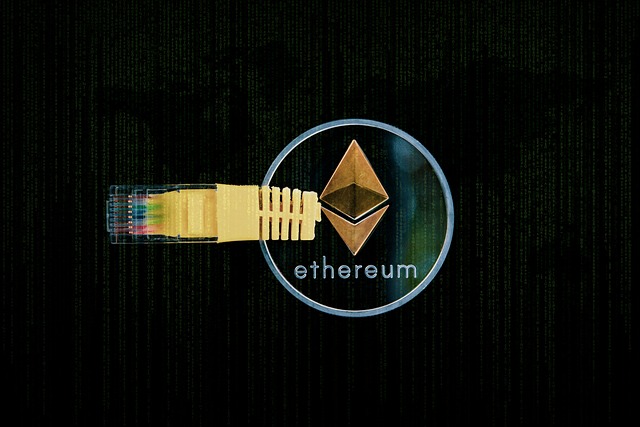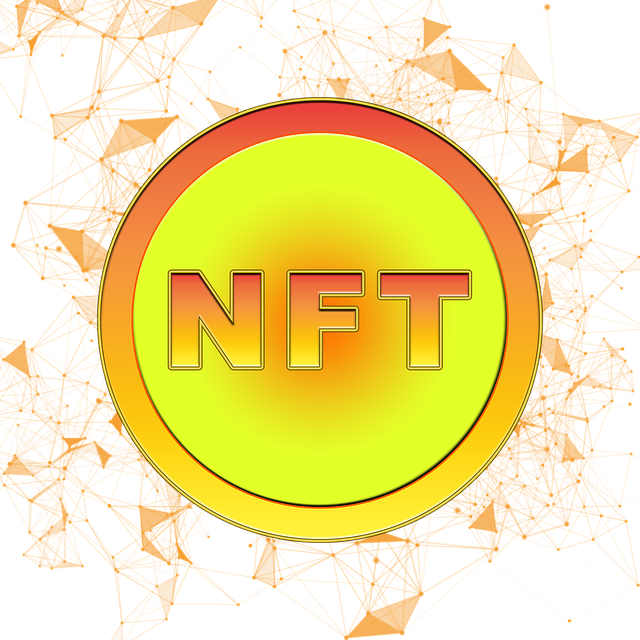
Ethereum, introduced by Vitalik Buterin in 2013, is a groundbreaking blockchain platform that facilitates decentralized, global, and open-source transactions through smart contracts and dApps. Its native cryptocurrency, Ether (ETH), powers these applications. The project's innovative virtual machine allows developers to build decentralized systems without intermediaries. Ethereum's community drives its continuous evolution, addressing scalability challenges like transitioning from Proof of Work (PoW) to Proof of Stake (PoS) for enhanced efficiency. Ethereum 2.0 further revolutionizes the space with improved security and scalability, positioning it as a leader in blockchain technology and driving mainstream adoption across various sectors.
“Unveiling Ethereum’s extraordinary journey, this article explores its evolution from a decentralized vision to a global phenomenon. Born with the aim of creating a more robust and flexible blockchain, Ethereum has since become a cornerstone in the crypto space, redefining smart contracts and decentralized applications. Through a deep dive into its core concepts, network architecture, and developer-driven innovations, we trace its path to overcoming challenges, embracing Ethereum 2.0, and its growing global impact, signaling a potential mainstream future.”
- The Birth of Ethereum: A Decentralized Vision
- Understanding the Core Concepts and Technologies
- Building Blocks: The Ethereum Network and Smart Contracts
- A Thriving Developer Community: Driving Innovation
- Breakthroughs and Challenges: Scaling and Security
- Ethereum 2.0: A Paradigm Shift and Future Prospects
- Global Impact and Adoption: From Crypto to Mainstream
The Birth of Ethereum: A Decentralized Vision

The concept of Ethereum emerged as a groundbreaking vision in the ever-evolving landscape of blockchain technology. Born from the desire to create a decentralized, global, and open-source platform, Ethereum aimed to transform the way digital interactions are conducted. In 2013, Vitalik Buterin introduced a whitepaper outlining his vision for a new type of blockchain that could support not only secure transactions but also execute complex smart contracts and decentralized applications (dApps).
This innovative idea sparked a revolution in the crypto space. By introducing the concept of a Turing-complete virtual machine, Ethereum enabled developers to build decentralized systems without relying on intermediaries. The network’s native cryptocurrency, Ether, serves as a fuel for these applications, facilitating seamless transactions and interactions within the ecosystem. This decentralized vision has fostered a vibrant community of developers, enthusiasts, and investors who collectively drive the continuous evolution and expansion of Ethereum.
Understanding the Core Concepts and Technologies

Ethereum, a groundbreaking blockchain platform, has revolutionized the way we perceive digital interactions and contracts. At its core, Ethereum is not just a currency but a decentralized, open-source technology that enables developers to build and deploy smart contracts and decentralized applications (dApps). This innovative concept introduces a new layer of functionality on top of traditional blockchain technology, allowing for more complex and interactive processes.
The platform’s native cryptocurrency, also named Ethereum (ETH), plays a pivotal role in its ecosystem. ETH serves as a fuel that facilitates transactions and executes smart contracts. Its introduction brought about the idea of a distributed global computer, where anyone can participate and contribute to the network’s security and operations, fostering a vibrant and decentralized community around the project.
Building Blocks: The Ethereum Network and Smart Contracts

The Ethereum network is a decentralized, open-source platform that has revolutionized the world of blockchain technology. At its core, it relies on a powerful concept known as smart contracts. These are self-executing contracts with the terms of the agreement directly written into code. Smart contracts enable automated and transparent transactions without the need for intermediaries, making Ethereum a game-changer in various industries.
The network consists of a global ledger, or blockchain, maintained by a network of computers or nodes. Each node runs a copy of the entire Ethereum blockchain, ensuring its security and integrity. This distributed system allows for secure, fast, and cost-effective transactions, becoming the building block for numerous decentralized applications (dApps) and innovative use cases, all powered by the Ethereum Virtual Machine (EVM).
A Thriving Developer Community: Driving Innovation

Ethereum, often hailed as a game-changer in the blockchain space, boasts a thriving developer community that is at the heart of its continuous evolution and innovation. This passionate group of individuals, driven by a shared vision of decentralized applications (dApps), has played a pivotal role in shaping Ethereum’s future. Their collective expertise spans various domains, from smart contract development to front-end design, fostering an environment where ideas flourish and new projects take flight.
The developer community’s dynamic nature encourages collaboration and knowledge sharing, leading to rapid advancements in Ethereum technology. Through open-source contributions, they refine the platform, enhance security measures, and introduce new features, ensuring Ethereum remains at the forefront of blockchain innovation. This collaborative spirit has not only accelerated development but also attracted a diverse range of talent, further strengthening the network’s capabilities and solidifying its position as a leading force in the cryptocurrency and blockchain revolution.
Breakthroughs and Challenges: Scaling and Security

Ethereum, often hailed as a breakthrough in blockchain technology, has faced its share of challenges on the path to realization. One of the primary hurdles has been scalability, which has become increasingly critical as the network’s popularity grows. With a growing number of transactions and users, Ethereum’s original design struggled to handle high-volume operations efficiently. This issue sparked intense debates within the community about the best approach to scaling, leading to various proposed solutions like Proof of Stake (PoS) and sharding.
Despite these challenges, Ethereum’s community has remained resilient, constantly pushing for improvements in security and scalability. The transition from Proof of Work (PoW) to PoS is a significant milestone, promising enhanced energy efficiency and faster transaction confirmations. As the network evolves, it continues to address vulnerabilities and improve its resilience against potential threats, solidifying its position as a leading smart contract platform.
Ethereum 2.0: A Paradigm Shift and Future Prospects

Ethereum 2.0 represents a significant paradigm shift in the way we think about decentralized applications and blockchain technology. This anticipated upgrade promises to enhance scalability, security, and energy efficiency by transitioning from a Proof-of-Work (PoW) consensus mechanism to Proof-of-Stake (PoS). With this change, Ethereum aims to support a larger number of transactions per second, making it more suitable for decentralized finance (DeFi), non-fungible tokens (NFTs), and other innovative use cases.
The future prospects of Ethereum 2.0 look promising as it opens up new possibilities for developers and users alike. By reducing energy consumption and transaction fees, PoS could encourage broader adoption and make Ethereum more accessible to mainstream users. Furthermore, the shift to a more sustainable consensus mechanism aligns with growing environmental concerns, positioning Ethereum as a leader in the blockchain space.
Global Impact and Adoption: From Crypto to Mainstream

Ethereum has transcended its initial role as a crypto currency, evolving into a powerful global platform with far-reaching implications. Its innovative smart contract technology has paved the way for decentralized applications (dApps) and opened up new possibilities across various sectors. From finance to supply chain management, art to gaming, Ethereum’s impact is undeniable.
The network’s growing adoption reflects its ability to offer secure, transparent, and efficient solutions. As more developers and businesses embrace Ethereum, its potential to disrupt traditional systems and empower individuals becomes increasingly apparent. This global shift from cryptocurrency as a niche interest to mainstream acceptance underscores Ethereum’s significance in shaping the future of digital technologies.
Ethereum’s journey from a decentralized vision to a global phenomenon showcases the power of community-driven innovation. Through its robust network, smart contracts, and dedicated developer base, Ethereum has not only transformed the blockchain landscape but also paved the way for mainstream adoption. As we look ahead, Ethereum 2.0 promises enhanced scalability and security, further solidifying its position as a revolutionary force in the world of cryptocurrency and beyond.






